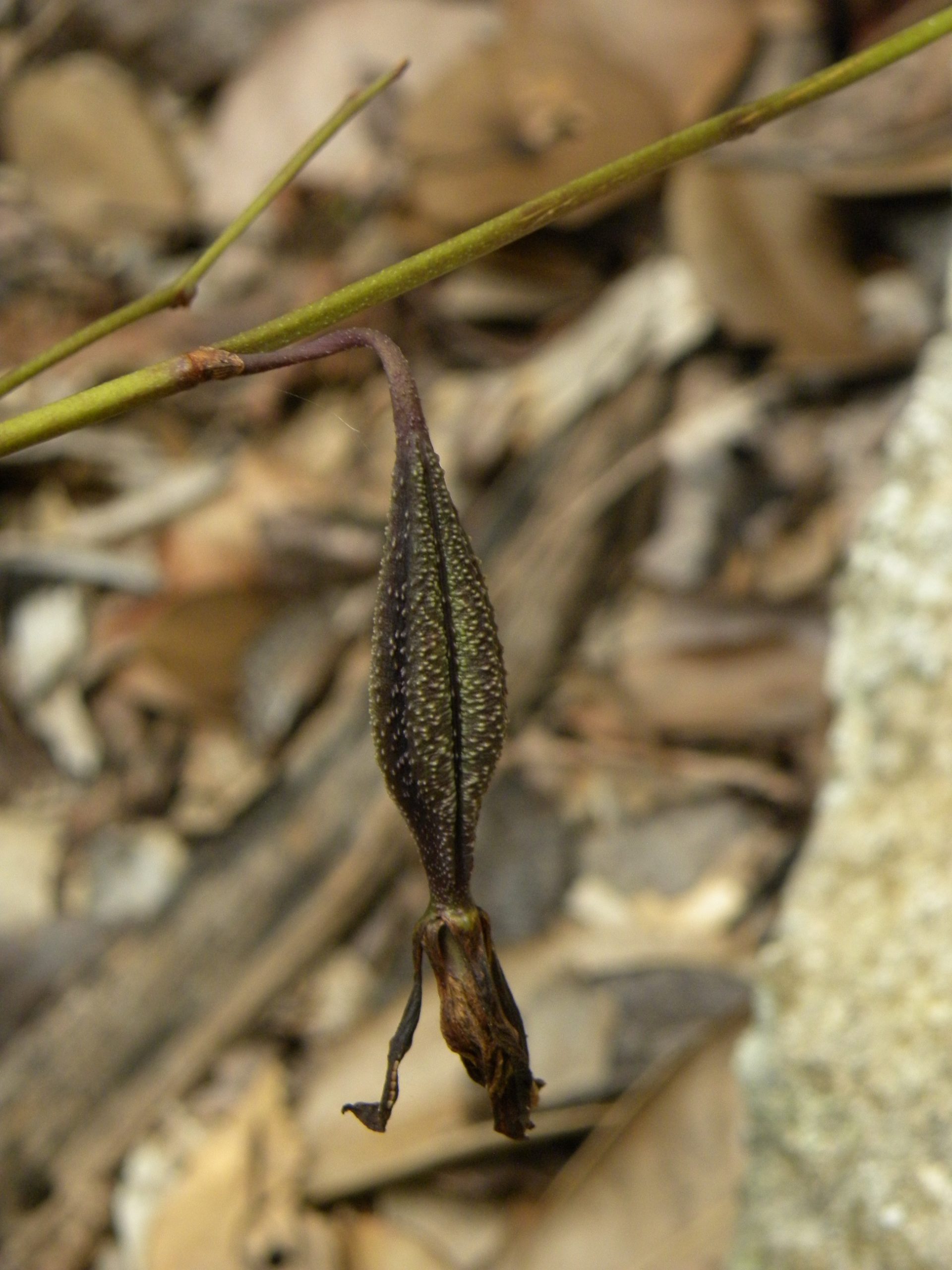Habit: Encyclia correllii grow as an epiphyte or among leaf detritus and rocks. It produces a very short rhizomatous stem that is covered with secondary stems that are expanded to form short pseudobulbs up to 10 cm in length. From the top of the pseudobulb stiff, flattened linear leaves emerge that are up to 25 cm in length. The pseudobulb can be a yellowish green color.
The zygomorphic flowers are arranged in terminal panicles up to 125 cm in height and contain 30-45 flowers that are produced in the spring from April through August. The flowers have bracts and the calyx has 3 greenish yellow sepals that turn brownish with age. The corolla has three petals with one forming the labellum. The labellum is three lobed, starts yellowish white but develops reddish purple lines that cover the labellum. Two lobes of the labellum wrap around the greenish yellow column. The column is formed from a fusion of the stamens and ovary into a single structure. The ovary is inferior. The fruit is a purple capsule with scales on the sides at maturity up to 5 cm in length that opens along six suture lines and hangs allowing wind to assist in seed dispersal.
Habitat: Encyclia correllii occurs in Dry Broadleaf Evergreen Formations – Forest/Woodland/Shrublands (Coppice) that have a mixture of species or are palm dominated.
Distribution: Encyclia correllii occurs on all islands in the Bahamian Archipelago. It is considered endemic
Medicinal/Cultural/Economic usage: While there are no medicinal uses of Encyclia correllii like all orchids they are prized for their beautiful flowers. ALL orchids are protected internationally by the Convention on the International Trade of Endangered Species (CITES) and should not be collected from the wild.



